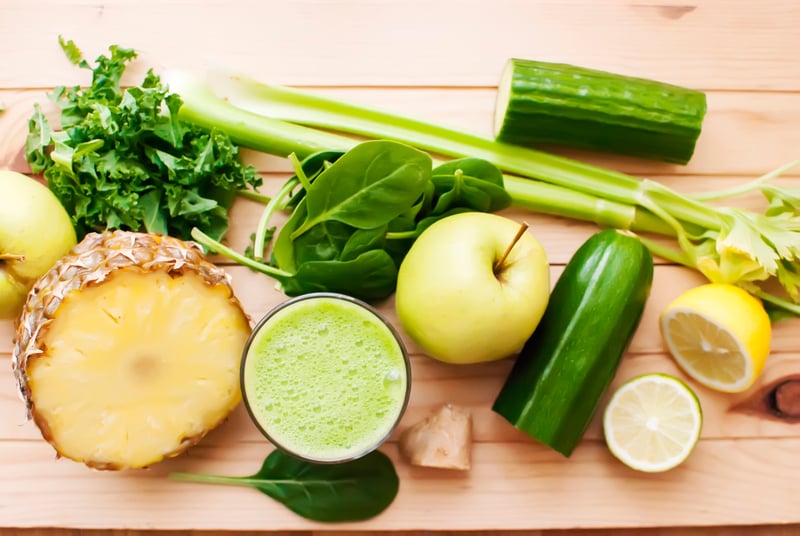Sirtfood Diet: What Is It? And Why Do Celebs Swear By It?

When it comes to new diet trends, there’s one that’s on the lips of many people right now: the Sirtfood Diet. Why is it so intriguing? Well, first off, red wine and chocolate are on the list of acceptable “sirtfoods.” And of course, there are the stunning before and after photos of Adele. (Though most will agree that Adele has always been and will always be stunning and inspiring, regardless of her diet or size!)
What is the Sirtfood Diet? Does it work? Or, is it just another passing diet trend serving as fodder for our diet-obsessed culture?
What is the Sirtfood Diet?
The curious word “sirtfood” comes from the word “sirtuin,” which is a family of nutrient-sensing compounds in the body. Sirtuins have different NAD+-dependent enzymatic activities in the body, and they have gained attention due to their potential effects on aging, metabolism, calorie restriction, and fat burning. 1, 2
To put things into perspective and “set the table,” if you will, sirtuins are naturally activated by fasting, and along those lines, they’re thought to play a significant role in the anti-aging benefits associated with caloric restriction. Exercise is also intimately involved, as it increases the expression of sirtuins in skeletal muscle.
That’s a little foreshadowing for what you might be able to expect from proponents of the Sirtfood Diet. If the benefits of fasting and exercise are, at least in part, regulated by sirtuins, then sirtfoods must produce benefits like fasting and exercise, right? I think that’s called the transitive property, but let’s see if that’s how things pan out…
For starters, sirtfoods don’t actually contain sirtuins; rather, they contain biologically active compounds that are believed to activate sirtuins. One such nutrient you may have heard of is resveratrol, which is found in red wine and grapes and received a great deal of attention from the nutrition world back in 2003. Others are common in both the Mediterranean and Asian diets or “MediterrAsian” Diets. 3 The list of sirtfoods includes:
- Arugula (aka rocket)
- Chilis
- Coffee
- Green tea
- Kale
- Medjool dates
- Red wine
- Turmeric
- Walnuts
- Chocolate (85%+ cocoa)
- Strawberries
- Onions
- Soy
- Parsley
- Extra virgin olive oil
- Matcha green tea
- Buckwheat (e.g., soba noodles)
- Lovage
- Red chicory
- Blueberries
- Capers
- Celery
Aidan Goggins and Glen Matten, nutritionists and the creators and authors of The Sirtfood Diet, published in 2016 in the U.K., claim this diet will allow folks to lose seven pounds in seven days, while eating the foods they love by activating “skinny genes.” They also claim the diet will lead to incredible energy and glowing health. 4 Other claims suggest it has anti-aging effects, improves memory, prevents the loss of muscle common with low-calorie diets, and reduces the risk of chronic disease. 5
The authors also claim that losing weight with this diet is less about calorie restriction and more about activating your “skinny genes” by consuming sirtfoods, which “melt away fat.”
Sounds perfect, right? But how hard is it to follow?
How to Follow the Sirtfood Diet
There are two phases of the diet that span three weeks in total.
The first phase lasts for a week, but it’s broken into two parts. For the first three days, calories are drastically restricted to a mere 1,000 per day. You drink three green juices with one sirtfood-rich meal. The next part of this phase lasts four days. You raise calories to 1,500 per day and cut out one green juice (so you’ll still drink two) and eat two sirtfood-rich meals.
The green drinks contain kale, arugula, parsley, celery, green apple, ginger, and matcha. You’ll not only need a juicer (a blender won’t work) but a food scale to weigh out each ingredient.
During these first seven days, the authors suggest you can lose seven pounds, which is how much, on average, the participants in their small pilot study lost. 5
The authors suggest the “secret” to the diet is that it provides vegetables and fruits that are high in polyphenols. These polyphenols, in turn, mimic some of the most beneficial effects of fasting and exercise. Again, the theory is they do so by activating the sirtuin proteins, or SIRTs, which is short for “silent information regulators.” 6
After the first week, you’ll enter phase two, or the 14-day maintenance plan, which ignores calories and instead focuses on controlling portions and eating well-balanced, sirtfood-containing meals. You’ll still drink at least one green juice per day, but you’ll consume three meals—and you can even have one to two snacks per day.
Exercising for 30 minutes 5 days per week is also encouraged; however, there isn’t a specific exercise recommendation, nor is it a primary focus.
After you’ve completed the first three weeks, you can either repeat the first two phases until you reach your desired weight. Or, you can simply start to “sirtify” meals, adding sirtfoods to your regular diet while continuing to consume a green juice daily.
- Breakfast, for example, could by soy yogurt mixed with berries, walnuts, and a sprinkle of dark chocolate.
- Lunch might be a big salad with kale, arugula, celery, blueberries, and walnuts.
- Dinner could be stir-fried shrimp on top of steamed kale over a bed of buckwheat noodles. And don’t forget your daily green drink!
Pros and Cons of Sirtfood Diet
Because you are cutting calories pretty drastically, especially during the first two phases, there’s a very good chance you’ll see some significant weight loss.
That said, if you cut your calories down to 1,000 to 1,500 calories, no matter what you eat, you’ll probably lose weight. However, it may not be the fastest or most pleasant way to lose weight. And you may lose mostly water and glycogen (which is your body’s storage form of sugar), rather than fat. Plus, many people experience headaches and light-headedness when dropping calories this low.
Reducing calories by 500 or fewer than “maintenance” (which varies significantly per person due to starting weight, activity levels, genetics, NEAT, and more) is an effective strategy for most people who are looking to lose weight. 7 It’s also healthier and more sustainable and less likely to trigger discomfort than going on a crash diet as recommended for the first two phases of the Sirtfood Diet.
In addition, because you’ll be drinking so many of those calories (in the form of green drinks), you may be left feeling hungry, as they lack fiber, protein, and healthy fats, which help fill you up and keep you feeling satiated for longer. Plus, chewing plays a major role in satiety. The juices could also lead to blood sugar spikes and crashes. However, these nutrient-rich juices could be part of a healthy diet if they’re consumed instead of a sugary sweet juice or soda and then combined with some fiber, protein, and healthy fats to slow digestion.
The foods on the “allowable” list are healthy, whole foods that provide a good dose of polyphenols, and many of them are delicious. However, researchers are only now learning the effects of foods high in polyphenols, and they don’t yet know how well these foods actually benefit weight loss. In other words, the research isn’t really there to support the notion of “skinny genes” activated by sirtfoods.
The Sirtfood Diet is also a very strict plan—with no wiggle room for those green drinks, for example—so it could be challenging to fit into your lifestyle and to follow for the long term, which could lead to weight loss followed rapidly by a return of all the weight you lost when you fall back into old habits. In terms of difficulty, it’s been ranked a 9 out of 10 (with 10 being most difficult), as it isn’t easy to follow.
As well, the diet isn’t recommended for folks who have medical conditions like diabetes or who are on blood-thinning medications. It also isn’t recommended for hard-training athletes or pregnant or breastfeeding moms.
In addition, because this is a fairly low-protein diet that doesn’t specifically promote weight training, despite the claims of not sacrificing muscle, you will likely lose muscle mass with this diet. This would decrease metabolic rate and make weight maintenance more difficult. It’s more sustainable to focus on fat loss and maintaining, or preferably gaining, lean mass for long-term results.
Should You Follow the Sirtfood Diet?
There are no magical compounds in foods that will help you effortlessly lose weight. Yep, as boring as it may sound, following a diet that provides real, whole foods combined with regular exercise, plenty of quality sleep, and an overall healthy lifestyle is the best way to enjoy long-term weight-loss results.
Could the Sirtfood Diet help jumpstart your progress? Perhaps—especially if you love green drinks. And a lot of the sirtfoods are themselves healthy, are nutrient-dense, and provide powerful non-nutrient compounds (such as polyphenols) with both antioxidant and anti-inflammatory properties. So, even if you aren’t following the diet, it certainly wouldn’t hurt to eat more of the listed sirtfoods.
For many people, though, there are easier-to-follow diets that are backed by science to provide long-term results when followed consistently. Some to consider include the DASH Diet, a vegetarian diet, a high-protein diet, a satiating diet, or the Mediterranean Diet.
One of the most important aspects of any diet or nutrition plan is if you can follow it for the long-term. In other words, choose a plan that allows you to eat foods you enjoy, makes you feel satisfied and energized, and allows flexibility, so you don’t have to give up eating meals with friends and family.
While the Sirtfood Diet does emphasize healthy foods, it can also be highly restrictive and difficult to follow. Sure, it’s a popular trend now, yet it may eventually find itself labeled as a short-term fad diet like so many others that have lost their original luster. That said, sirtfoods are nutrient-dense, and their regular consumption has been shown to be beneficial. The preliminary results on increased health span in yeast, worms, and mice have been exciting. 8
The recipes included in the book are also reportedly delicious. (I haven’t personally tried any of them, but they do look tasty.) So, you could also just skip the first week and dive into the “maintenance weeks” for some solid nutrition and to find some new recipes (such as aromatic chicken breast with kale and red onions with tomato and chili salsa or Asian king prawn stir-fry with buckwheat noodles) for your rotation.







